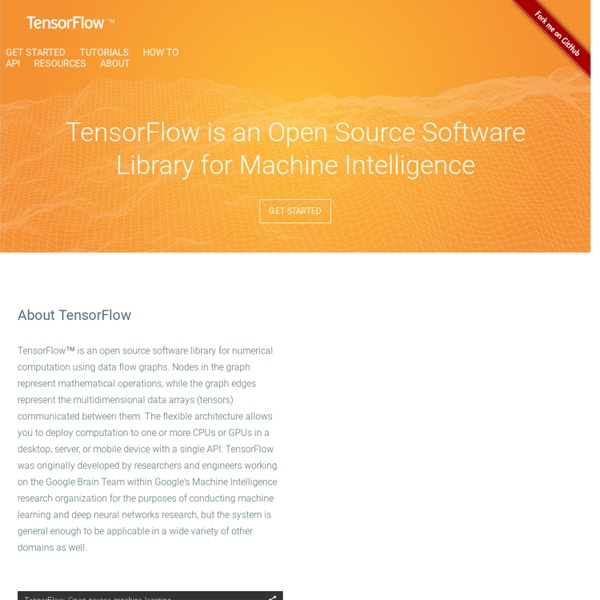



OpenAI OpenAI is a non-profit artificial intelligence research company. Our goal is to advance digital intelligence in the way that is most likely to benefit humanity as a whole, unconstrained by a need to generate financial return. Since our research is free from financial obligations, we can better focus on a positive human impact. We believe AI should be an extension of individual human wills and, in the spirit of liberty, as broadly and evenly distributed as possible. The outcome of this venture is uncertain and the work is difficult, but we believe the goal and the structure are right. Background Artificial intelligence has always been a surprising field. The past few years have held another flavor of surprise. This approach has yielded outstanding results on pattern recognition problems, such as recognizing objects in images, machine translation, and speech recognition. Looking forward AI systems today have impressive but narrow capabilities. OpenAI
Jupyter and the future of IPython — IPython DBSCAN Density-based data clustering algorithm Density-based spatial clustering of applications with noise (DBSCAN) is a data clustering algorithm proposed by Martin Ester, Hans-Peter Kriegel, Jörg Sander and Xiaowei Xu in 1996.[1] It is a density-based clustering non-parametric algorithm: given a set of points in some space, it groups together points that are closely packed together (points with many nearby neighbors), marking as outliers points that lie alone in low-density regions (whose nearest neighbors are too far away). DBSCAN is one of the most common, and most commonly cited, clustering algorithms.[2] The popular follow-up HDBSCAN* was initially published by Ricardo J. History[edit] In 1972, Robert F. Preliminary[edit] Consider a set of points in some space to be clustered. A point p is a core point if at least minPts points are within distance ε of it (including p).A point q is directly reachable from p if point q is within distance ε from core point p. Algorithm[edit] where . Notes[edit]
Conjugaison de tous les verbes avec Le Conjugueur NumPy — Numpy Data mining Process of extracting and discovering patterns in large data sets Data mining is the process of extracting and discovering patterns in large data sets involving methods at the intersection of machine learning, statistics, and database systems.[1] Data mining is an interdisciplinary subfield of computer science and statistics with an overall goal of extracting information (with intelligent methods) from a data set and transforming the information into a comprehensible structure for further use.[1][2][3][4] Data mining is the analysis step of the "knowledge discovery in databases" process, or KDD.[5] Aside from the raw analysis step, it also involves database and data management aspects, data pre-processing, model and inference considerations, interestingness metrics, complexity considerations, post-processing of discovered structures, visualization, and online updating.[1] Etymology[edit] Background[edit] The manual extraction of patterns from data has occurred for centuries. Process[edit]
links importantes Hundreds of (public domain) hexagon tiles and objects! : gamedev Machine learning Machine learning is a subfield of computer science[1] that evolved from the study of pattern recognition and computational learning theory in artificial intelligence.[1] Machine learning explores the construction and study of algorithms that can learn from and make predictions on data.[2] Such algorithms operate by building a model from example inputs in order to make data-driven predictions or decisions,[3]:2 rather than following strictly static program instructions. Machine learning is closely related to and often overlaps with computational statistics; a discipline that also specializes in prediction-making. It has strong ties to mathematical optimization, which deliver methods, theory and application domains to the field. Machine learning is employed in a range of computing tasks where designing and programming explicit, rule-based algorithms is infeasible. Example applications include spam filtering, optical character recognition (OCR),[4] search engines and computer vision.